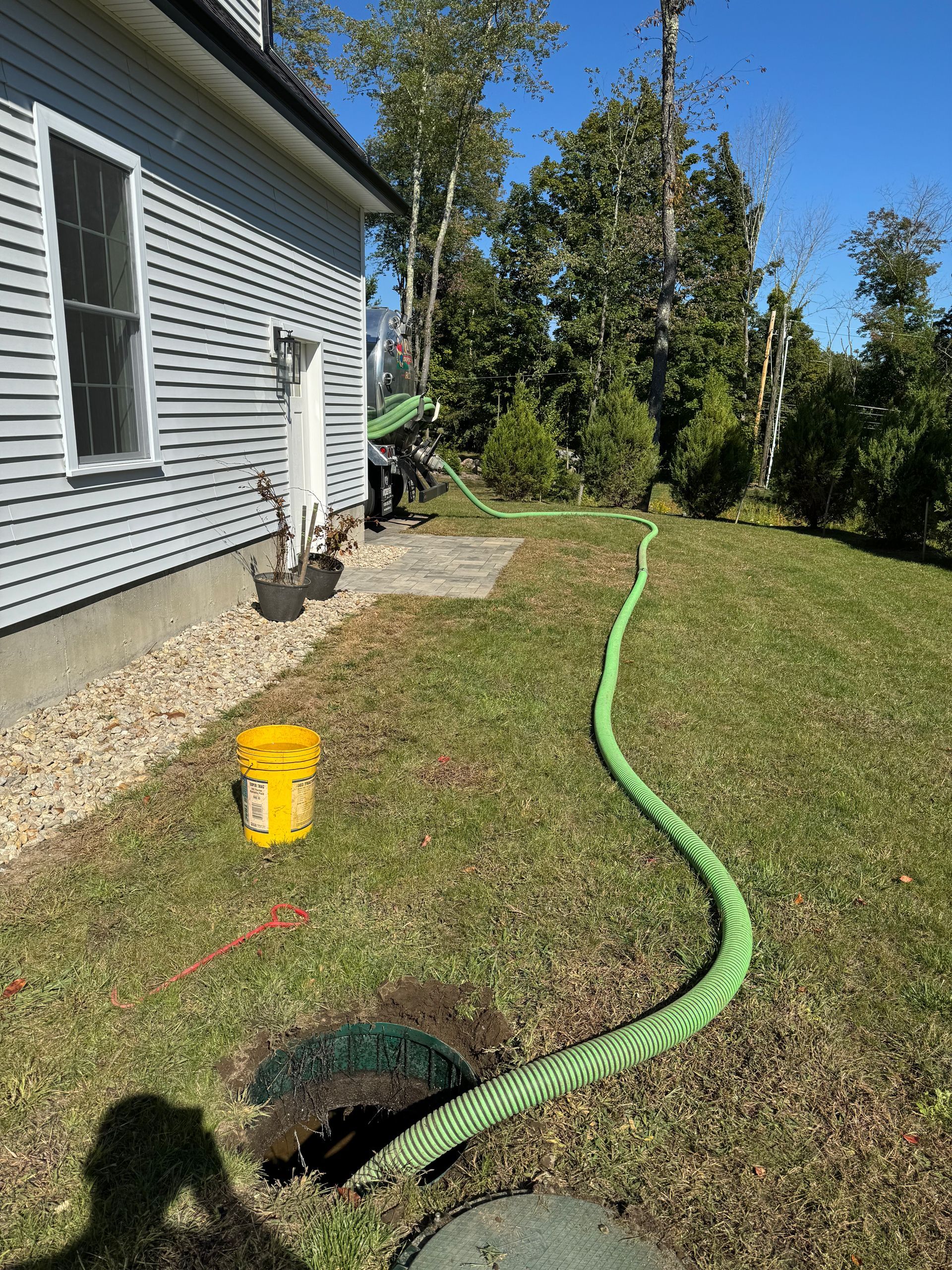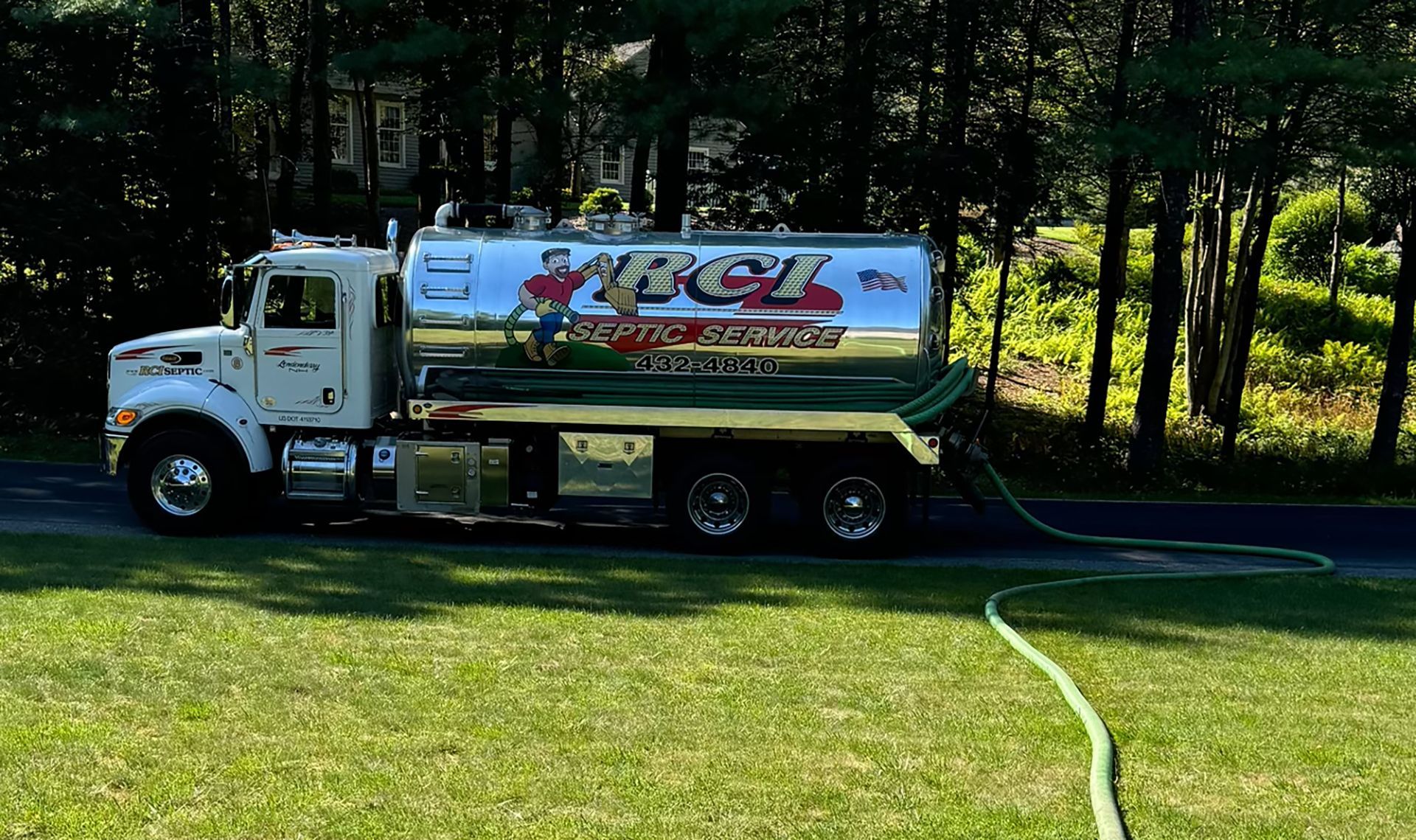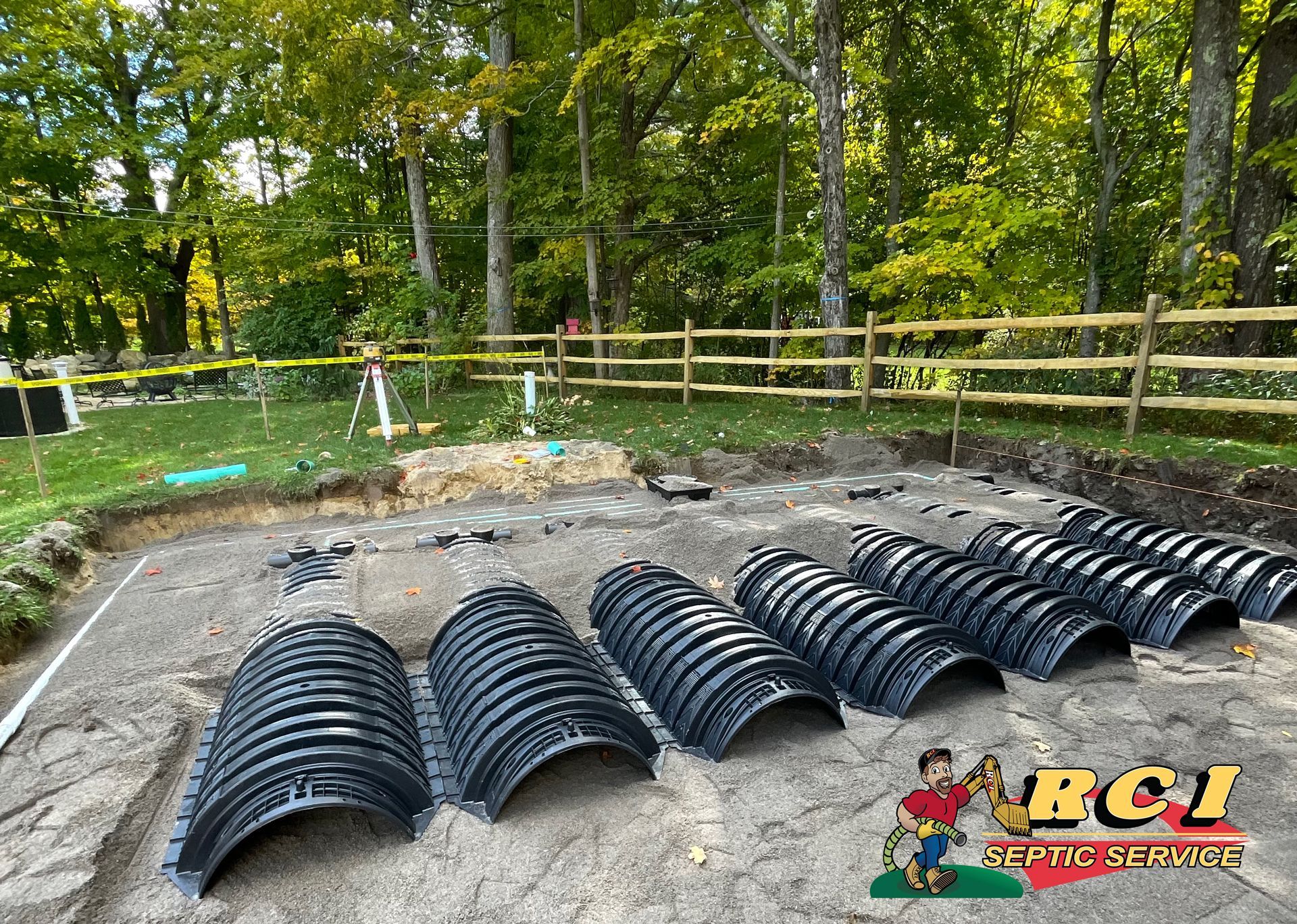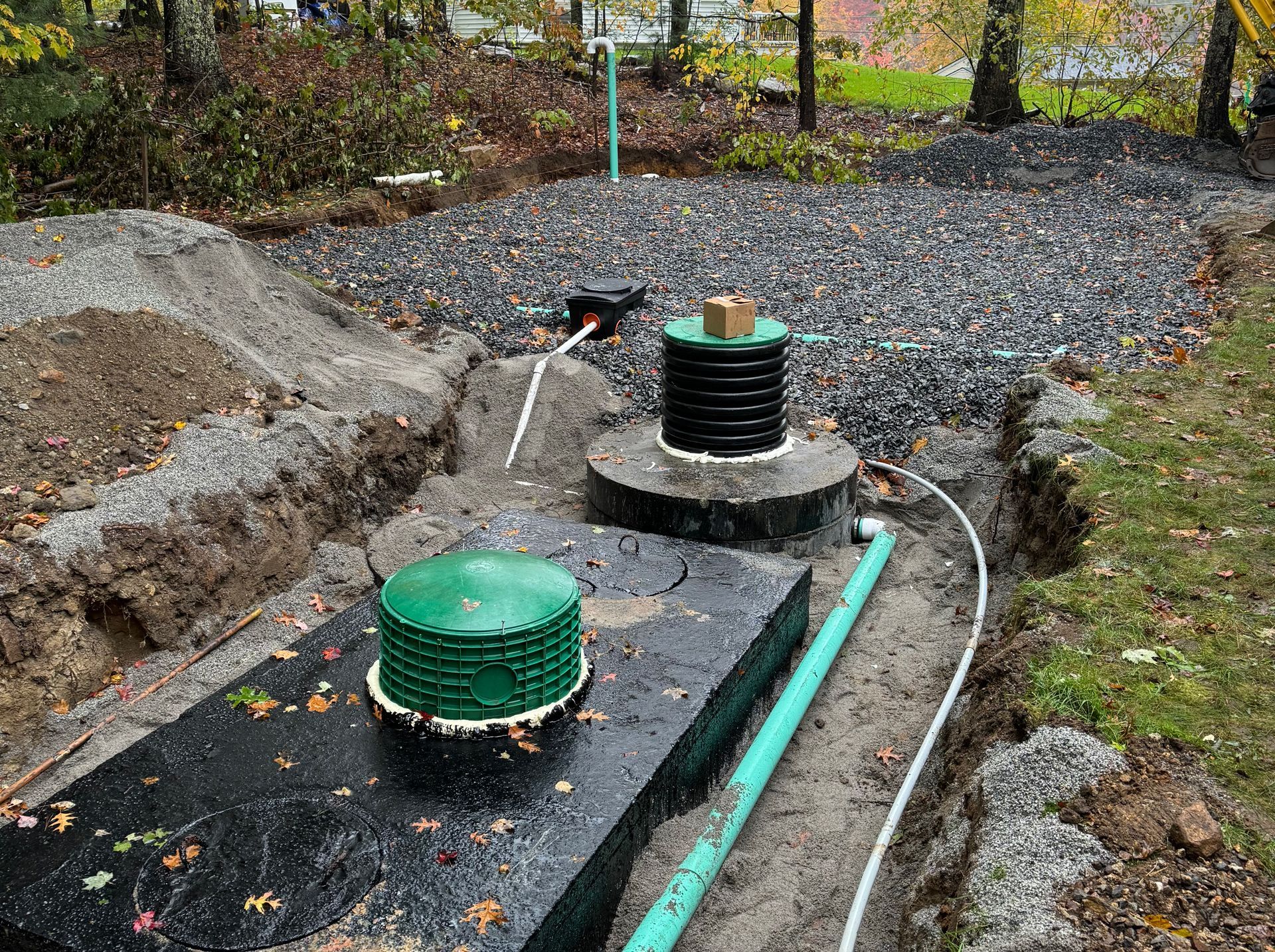How to Fix It Fast: What to Do When Your Septic Tank Is Overflowing
Is your septic tank overflowing? Learn the urgent steps to take, identify the cause, and find professional solutions to fix it fast. If your septic tank is overflowing, act now to prevent further damage and health risks.
Key Takeaways
- Immediate cessation of water use is critical when a septic tank overflows to prevent worsening the situation.
- Identifying the cause of the overflow—such as blockages, drain field issues, or excessive water usage—is essential for effective resolution.
- Regular maintenance and mindful water usage are key preventative measures to avoid future septic tank overflowing.
Understanding Septic Tank Overflows
What is a Septic Tank Overflow?
A septic tank overflow occurs when your septic tank cannot handle the volume of wastewater entering it. This can lead to backups, flooding, and even environmental hazards. Several factors can cause a septic tank overflow, including excess water usage, clogs in the drain pipes, or a malfunctioning septic system. When too much water enters the tank too quickly, it doesn’t have enough time to separate and treat the wastewater properly, leading to an overflow. Regular maintenance and mindful water usage are crucial to prevent this issue.
Signs of a Septic Tank Overflow
Recognizing the signs of a septic tank overflow early can help you take swift action to prevent further damage and health risks. Here are some common indicators:
- Slow Draining Toilets and Sinks: If your toilets and sinks are draining slower than usual, it could be a sign that your septic system is overwhelmed.
- Backed-Up Sewage: Sewage backing up into your home is a clear sign of a serious problem with your septic system.
- Gurgling Sounds from the Drains: Unusual gurgling noises from your drains can indicate that your septic tank is full and struggling to process wastewater.
- Unpleasant Odors: Foul smells coming from your septic system or drains are a strong indicator of an overflow.
- Water Pooling Around the Septic Tank: If you notice water pooling around your septic tank, it could mean that the tank is overflowing and unable to handle the wastewater.
By keeping an eye out for these signs, you can address septic tank issues before they escalate into more severe problems.
Potential Damage to Your Home and Health Risks
A septic tank overflow can cause significant damage to your home and pose serious health risks. Here are some potential consequences:
- Water Damage to Basements or Crawl Spaces: Overflowing septic tanks can lead to water damage in lower areas of your home, such as basements or crawl spaces.
- Compromise of the Home’s Foundation: Over time, water damage from a septic tank overflow can weaken and compromise your home’s foundation.
- Damage to the Landscape: The area around your septic tank can become waterlogged, damaging your lawn and garden.
- Exposure to Harmful Pathogens: Septic tank overflows can expose you and your family to harmful pathogens, bacteria, and viruses, increasing the risk of illnesses.
- Increased Risk of Illnesses: Households with children, elderly members, or individuals with compromised immune systems are particularly vulnerable to the health risks associated with septic tank overflows.
Addressing a septic tank overflow promptly and taking preventive measures can help you avoid these damages and health risks. Regular maintenance, inspections, and pumping of the septic tank are essential to ensure your septic system functions properly and to prevent overflows.

Immediate Actions to Take When Your Septic Tank Is Overflowing
Immediate action is needed to prevent damage when your septic tank overflows. Start by reducing all non-essential water use and avoiding contact with contaminated water.
These actions will help alleviate the issue temporarily while you diagnose the problem and seek professional help.
Stop Using Water Immediately
The most critical action when a septic tank overflows is to stop using water immediately. Activities like showers, laundry, and flushing toilets can worsen the problem. Halting non-essential water use prevents additional water from entering the system and can help manage the overflow temporarily.
Conserve water by fixing leaky faucets, spreading out the use of water-intensive appliances, and being mindful of usage. These measures alleviate strain on your septic system and help prevent overflows.
Ensure Safety and Avoid Contact
Safety must be a priority when dealing with an overflowing septic tank. Contaminated water poses health risks, including disease transmission. Avoid contact with this water and keep children and pets away from affected areas.
If you must handle anything near the overflow, wear protective gloves and wash thoroughly afterward. Prioritize health and safety above all.
Identifying the Cause of the Overflow
Identifying why your septic tank is overflowing is essential for a lasting solution. Common causes include drain pipe blockages, drain field issues, and excessive water usage patterns.
Determining the root cause helps address the problem effectively and prevents future occurrences.
Check for Blockages in Drain Pipes
Blockages in drain pipes often cause septic tank overflows by preventing wastewater from reaching the septic tank, leading to backups. Signs include slow drains, gurgling sounds, and water pooling around the drainage field. Tree roots frequently infiltrate and clog drain lines, causing significant damage.
Inspect drain pipes for obstructions to check for blockages. If the septic tank is not full to the level of the outflow drain pipe, a blockage might be present. Promptly addressing blockages prevents further issues and potential property damage.
Inspect the Drain Field or Leach Field
The drain field, or leach field, is crucial for wastewater disposal from the septic system. Signs of failure include backflow into the septic tank and standing water in the drain field. Soil conditions, like heavily compacted or clay soil, can significantly affect drainage efficiency.
Check for signs of damage during your inspection and ensure gutters and downspouts discharge water properly into separate soakaways. Regular inspections and maintenance of the drain field prevent overflows and maintain your septic system’s health.
Assess Recent Water Usage Patterns
Recent water usage patterns can provide clues about the cause of the septic tank overflow. Excessive laundry loads, frequent baths or showers, and heavy rainfall can contribute to the problem. During heavy rainfall, increased water flow can saturate the soil around the septic tank, limiting its ability to release liquids and causing an overflow.
If you’ve recently done many loads of laundry or used large amounts of water, reduce consumption to allow the system to recover. Reducing water usage prevents further overflow and ensures the septic system operates correctly.

Professional Solutions for Overflowing Septic Tanks
Professional help is often the best course of action for a septic tank overflowing. Experts have the expertise and equipment to diagnose and fix the problem efficiently.
Professionals can provide solutions like septic tank pumping, repairs, and restoring the bacterial balance within the septic systems.
Schedule a Septic Tank Pumping
Regular septic tank pumping removes sludge and prevents clogs that can lead to system failure. Tanks should generally be emptied every three to five years, depending on size, number of residents, and water usage. Failure to have the septic tank pumped can result in premature filling with solids, causing serious malfunctions.
Scheduling regular septic tank pumping prevents overflow problems and ensures efficient operation. This preventive measure is crucial for maintaining the system’s health and longevity, especially when the tank pumped is done on time.
Repair or Replace Damaged Components
Septic system components can become damaged over time. Tree roots, for instance, can infiltrate and clog drain lines, causing significant damage. Early repairs or replacements can save money in the long run by avoiding more expensive fixes later. Damaged components, like outlet pipe, can lead to overflows and other serious issues.
Promptly addressing these issues with professional help prevents significant damage and ensures your septic system properly functions. Regular maintenance and timely repairs are essential for the system’s longevity.
Restoring Bacterial Balance
A healthy bacterial balance in your septic tank is crucial for effective waste breakdown. Bacterial additives can improve system efficiency by restoring the microorganisms that help decompose solid waste.
This measure ensures the system functions properly and prevents overflows.

Preventative Measures to Avoid Future Overflows
Preventing future overflows, including septic tank overflowing, involves regular maintenance and mindful practices. Essential measures include regular maintenance and inspections, mindful water usage, and proper waste disposal to avoid excess water usage.
Regular Maintenance and Inspections
Regular maintenance and inspections are vital for a healthy septic system. Septic tanks should be inspected every 2-3 years and emptied every three to five years, depending on usage. Keeping a log of inspections and repairs helps predict when the system needs attention and can prevent emergencies.
Most homeowners should follow a technician’s schedule for inspections and pumping to ensure the septic system remains in working order. Regular maintenance prevents overflows and contributes to the system’s longevity.
Mindful Water Usage
Mindful water usage is essential to avoid overwhelming your septic system. Space out water-intensive activities like bathing and washing dishes to prevent excess water from entering the system at once. Be cautious during heavy rainfall, as it can saturate the soil around the septic tank and limit its ability to release liquids.
Minimizing and avoiding excessive water usage helps maintain your septic system’s balance and prevent overflows. Simple actions like fixing leaky faucets can significantly reduce and minimize water usage.
Proper Waste Disposal
Proper waste disposal is crucial for maintaining your septic system’s health. Only flush biodegradable materials and avoid non-degradable items like feminine hygiene products and certain types of toilet paper. Flushing non-degradable items can lead to costly repairs and system failure.
Regularly reviewing what is flushed down the toilet helps preserve your septic system’s longevity and prevent blockages. Maintaining the system’s health is crucial to prevent overflow problems and ensure it functions properly.
Summary
In conclusion, dealing with a septic tank overflow requires immediate action, proper diagnosis, and professional intervention. Implementing regular maintenance, mindful water usage, and proper waste disposal can prevent future overflows. By following these guidelines, you can ensure your septic system remains in optimal condition, protecting your home and health.
Frequently Asked Questions
What should I do first when my septic tank is overflowing?
Immediately cease all water usage to prevent further overflow, and prioritize your safety by avoiding contact with any contaminated water.
How often should I pump my septic tank?
You should pump your septic tank every one to three years, depending on factors like tank size, the number of residents, and your water usage. Regular maintenance is essential to avoid costly repairs and ensure efficient operation.
What are the common causes of septic tank overflows?
Septic tank overflowing is commonly caused by blockages in drain pipes, problems with the drain field, and excessive water usage from plumbing leaks or water softener. Addressing these issues promptly can help prevent overflows.
How can I prevent my septic tank from overflowing in the future?
To prevent your septic tank from overflowing, prioritize regular maintenance and inspections, use water wisely, and dispose of waste properly. Taking these steps will help ensure your system operates efficiently.
When should I call a professional for my septic tank issues?
You should call a professional for your septic tank issues if the problem persists after a few days or if it has been overdue for emptying. Prompt action can prevent further complications and ensure proper functioning.

